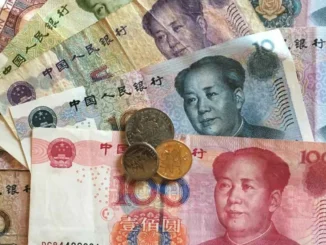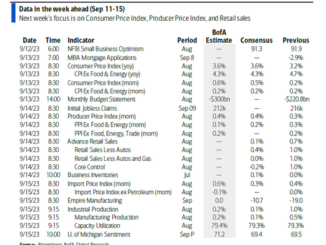
THE COMING ENERGY TRANSITION
The energy transition has begun, with all major global polluters having pledged to achieve carbon neutrality by around mid-century, and with global renewable energy capacity increasing steadily. China—the world’s largest polluter—has also become the largest producer of energy from wind, solar and hydropower.
China plans to generate one-third of its electricity from renewables by 2025. The country already adds more green energy capacity annually than all other countries combined. It now accounts for over three-quarters of new solar and wind capacity and 80% of new hydropower capacity added annually. In 2021 alone, China added 17 gigawatts to its offshore wind energy grid—seven times that of the rest of the world combined. This resulted in 50% of the global offshore wind capacity now lying in China.
China is also the world’s largest electric vehicle (EV) market, with half of all EVs sold there. The country’s fleet of half a million EV buses accounts for 98% of global market share. Despite this, China will remain the world’s largest polluter. By some estimates, the country emits more greenhouse gasses than the entire developed world combined, and its emissions may only peak around 2030.
Nonetheless, China’s pace of adopting renewables is impressive. Much of the rest of the world is now also looking to China for their own goals in energy transition, as it has become the undisputed champion of green technology supply chains.
ALL SUPPLY CHAINS LEAD TO CHINA
From raw material production to equipment manufacturing, China controls the world’s green tech supply chains. For example, China owns around 80% of global photovoltaic panel supply chains. In terms of photovoltaic key components, its share of manufacturing is expected to soon even surpass 95%. China is also a major provider of wind turbines. Six of the world’s ten largest wind turbine manufacturers are Chinese.
But nowhere is China’s grasp on green tech manufacturing as stark as with energy storage. From EVs to electric grids, batteries are at the center of powering a fossil-free world. Three-quarters of all lithium-ion batteries are produced in China, and many of the remaining batteries produced elsewhere also require Chinese components. Despite strong investments by the EU and the US in this sector, 70% of all battery production is expected to happen in China between now and 2030. One reason for this outlook is long lead-times for the development of new raw material sources, which can take over a decade.
The resources in question are mainly critical minerals—in particular, lithium, nickel, cobalt, copper, and rare earth elements. They are crucial for the world’s economies and modern technology in general. Production of these minerals will have to drastically increase to realize the global energy transition, as current supply growth trajectories cannot catch up with rising demand, which is expected to increase at least sixfold by 2050.
Much of the critical mineral production is currently controlled by China, including production for rare earth elements, on which it has a near monopoly in production and refining. China controls 80% of total rare earths production. In case of rare earth magnets, which are particularly important for cutting-edge electronics, China accounts for 95% of global production.
The world has come to depend on China for rare earths—although “rare” is a misnomer. Vietnam, Brazil, India, Australia and the US all have significant deposits. The US is planning to expand its onshore rare earths mining from its current, single mine in California, but this will likely take several more years. A major obstacle to rare earths mining is its environmental impact. Even several European countries have deposits worth mining, including Sweden, Finland, Spain and Greece, but local opposition has forestalled any attempts at exploiting them.
China also controls the lion’s share of critical minerals needed for battery production. Those minerals are, primarily, lithium, cobalt, nickel, graphite and manganese. Lithium continues to soar in demand, thanks in large part to rising EV sales and energy storage needed for wind and solar energy. To meet Paris Agreement goals and attain carbon neutrality by mid-century, lithium supply would have to increase by another 40 times within just the next two decades.
Around half of the world’s lithium comes from Australia, followed by around 10% from Chile. Those countries account for two-thirds of global lithium deposits and are rapidly expanding their mining capacities. However, 60% of lithium refining actually happens in China, which is also the world’s third-largest producer of the mineral. In addition, Chinese firm Tianqi Lithium owns a majority stake in the world’s largest lithium mine, Australia’s Greenbushes.
Another key ingredient in battery production is cobalt, the most valuable of these minerals by weight. 70% of the world’s cobalt is sourced in the Democratic Republic of Congo (DRC), which is home to over half of the world’s known deposits. Human rights abuses, unsafe working conditions and child labor remain serious issues in the mining of cobalt, but due to its abundance of deposits, the DRC will likely remain the world’s main source.
Russia, Australia, the Philippines, Canada, Cuba, and China also mine cobalt, albeit in much smaller quantities. However, China still controls most of the cobalt value chain. Not only is two-thirds of the mineral processed in China, 15 of the DRC’s 19 major cobalt mines are either financed or wholly owned by Chinese companies. Some of this cobalt dependency can be offset by transitioning to more nickel-heavy batteries, which also have a higher energy density and therefore extend EVs’ driving range.
Demand for nickel, which is also significantly cheaper than cobalt, has increased rapidly. 30% of nickel is currently sourced in Indonesia and half of global growth in nickel production over the next three years will come from there, as will an increasing amount of refined nickel. But as many Western countries have shied away from investing there, due to serious environmental concerns, much of this growth happens through Chinese joint ventures. Because of this, China has secured enough of the nickel its economy will need in the coming years. The same applies to the remaining critical minerals required for lithium-ion batteries: China produces over two-thirds of the world’s graphite and also sits on Asia’s largest manganese deposits.
Moving up the value chain of batteries, China is also the world’s largest manufacturer of all four main components of lithium-ion batteries: 53% of global processing capacity for cathodes, 78% for anodes, 62% for electrolytes, and 66% for separators are in China. All major EV producers, including Tesla, Volkswagen and Hyundai depend, to some extent, on Chinese companies for their batteries. Shenzhen-based BYD has surpassed them all to become the world’s largest EV producer. BYD is also the world’s second biggest EV battery producer—second only to the global heavyweight CATL, also from China. BYD and CATL now have a combined global EV battery market share of 50%.
As for the commonly-cited energy storage alternative in transportation, China is also already the world’s largest producer of hydrogen. The country is also the third-largest hydrogen fuel-cell EV (FCEV) market—first for FCEV buses and trucks. China’s hydrogen is still mainly produced with fossil fuels, but given its rapidly growing green energy infrastructure, it is well positioned to also become a major green hydrogen producer. And according to Beijing’s 2021-2035 hydrogen plan, China is also to become a major exporter of electrolyzers, which are needed to produce hydrogen. Given the rapidly rising demand for hydrogen, China will likely also become a world leader in this field.
THE ERA OF GREEN TECH GEOPOLITICS
China has come to control the global supply chains required for the energy transition. This trend will likely continue until at least 2030. However, there still is potential for other countries to reduce dependency on China. After all, most of China’s success in this field was not due to fortunate geography, but successful industrial policy.
China’s focus on the green energy transition turned the country into the largest market for renewable energy production and energy storage. The resulting economies of scale further drove down prices for components and spurred innovation. China also became the world’s largest EV market, in large part due to significant subsidies and pro-business incentives.
Reclaiming the technological and economic edge in green tech manufacturing will be a challenge, especially in areas where China has pulled far ahead, including photovoltaic technology and batteries. The success of schemes such as the US’s Plan to Secure Critical Supply Chains, the EU’s Critical Raw Material Act, as well as the various Green Deals by the US, EU and other countries, including South Korea, will depend on governments’ long-term commitment to onshoring resource production and equipment manufacturing, despite the high cost and economic inefficiencies this will require. An area where decoupling from Chinese green tech would be relatively simple is critical mineral mining and processing.
The Biden administration’s plan for onshoring mineral supply chains involves creating domestic production and processing capacities for critical minerals, including rare earths, lithium and cobalt. In addition, a $3 billion investment in refining and recycling battery minerals was announced. Recycling will have to play a much greater part in battery supply chains, which are excessively wasteful. The EU’s proposed Battery Regulation will require EV manufacturers to use at least 4% of recycled lithium and 12% of recycled cobalt in new batteries from 2030. However, recycling can only offset part of future mineral demand.
Europe also has some significant mineral reserves, including rare earths in Sweden, lithium in Spain and Portugal, and copper in Romania. However, local opposition to mining tends to be fierce. Hence, future mineral supplies are more likely to come increasingly from the US. There may still be a future for European critical mineral production, but it will likely be another decade before significant mining can take place. Meanwhile, China raised its output of rare earths by 25% in 2022 alone.
There will also be alternative battery solutions growing in popularity over the coming years, but given lithium-based batteries’ energy density and versatility, they will likely remain the most prevalent batteries for the foreseeable future, whether in the form of cobalt or nickel-heavy lithium batteries.
Based on the current trajectory, the global energy transition will depend in large part on China. The world will rely on close economic cooperation and trade with China to realize carbon neutrality and ditch fossil fuels. This means that any serious upsets in relations with China, such as trade wars or a hot war over Taiwan, would likely forestall or even reverse progress in energy transition. This also means that, as urgency over decarbonization increases in the years to come, Beijing will likely see its diplomatic and economic leverage grow significantly. Despite efforts of high-tech decoupling between the West and China, Beijing will have to remain an integral part in green technology supply chains for the foreseeable future, if developed economies are serious about their pledges on energy transition. Green tech supply chains are thus going to become a critical factor in geopolitics.



